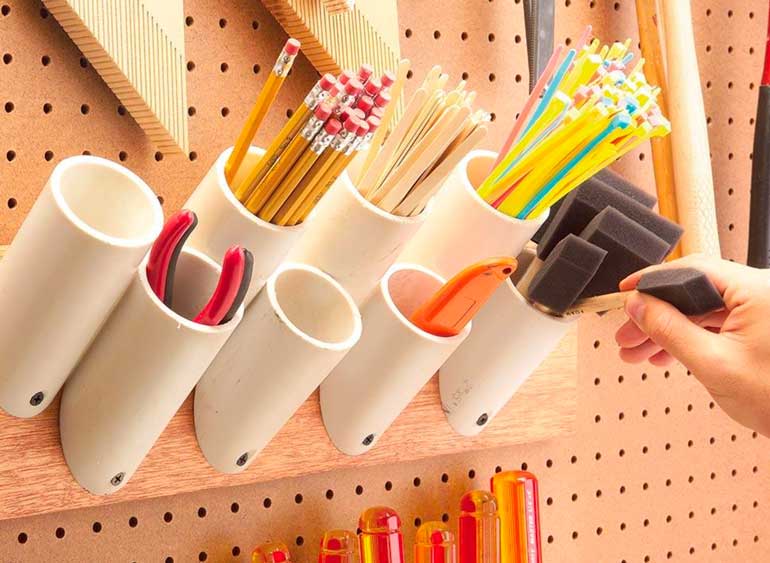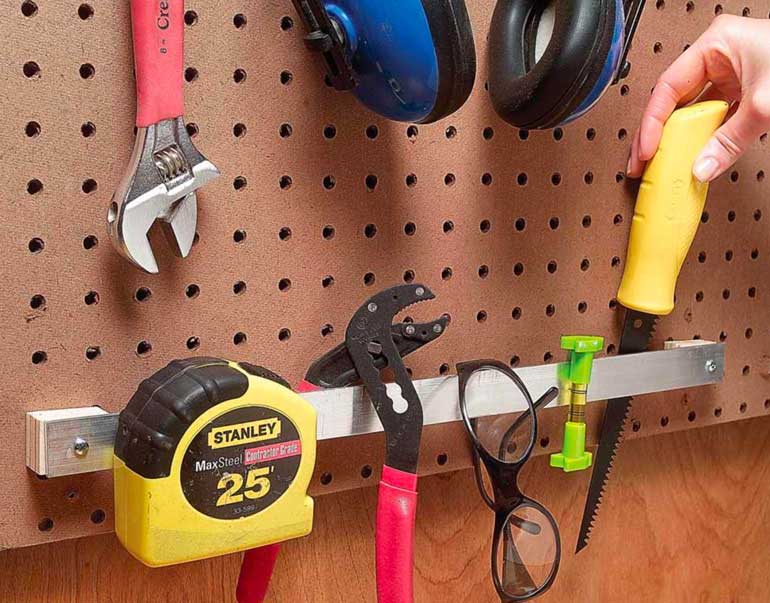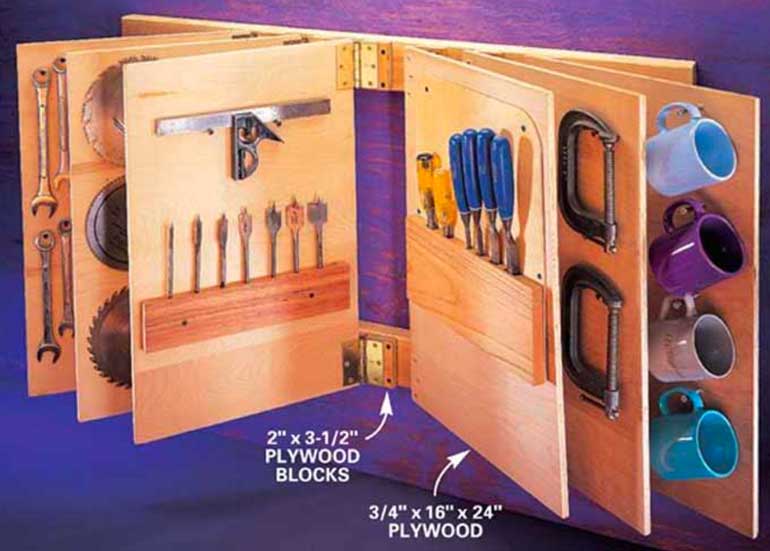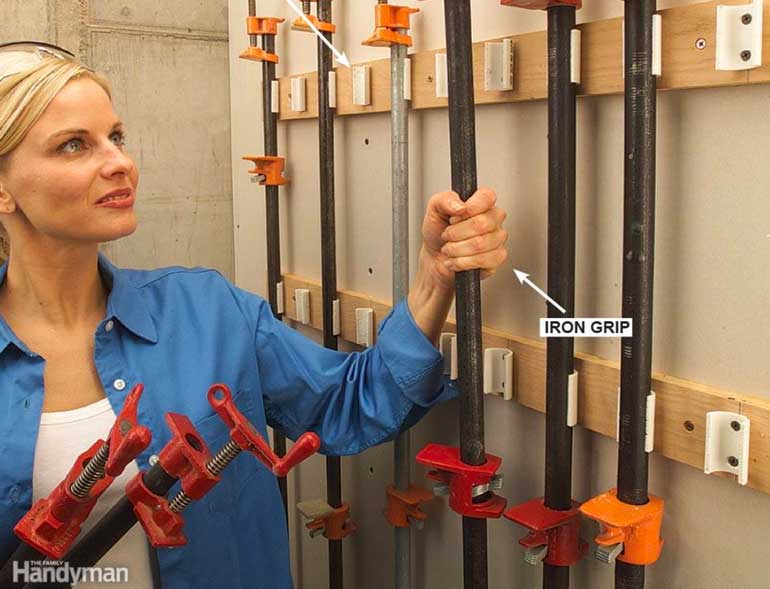Find everything you need in the garage quickly and easily with these innovative and create storage solutions.
Gutter bins
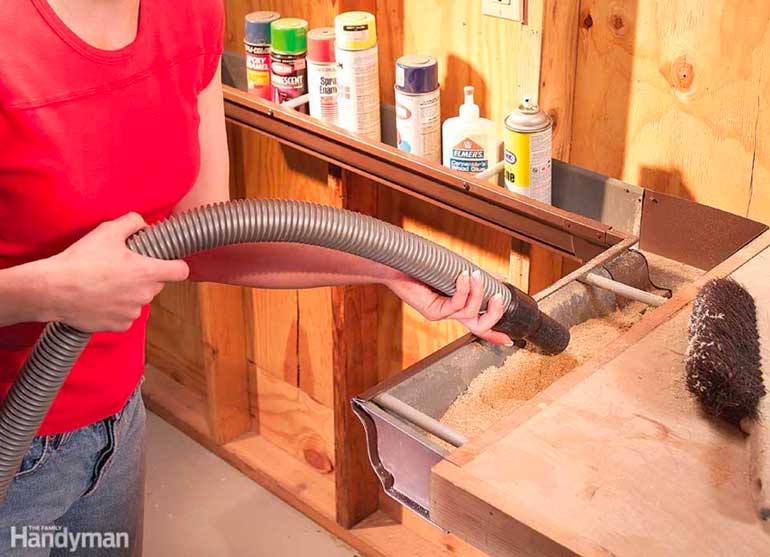
Here are a couple of clever ways to use leftover gutter parts. Build small bins with the scrap gutter lengths, end caps and corner pieces. Mount the bins to a wall or workbench edge to hold parts and tools or serve as a dustbin. Or, screw downspout sections to a board and mount it on the wall to store wood dowels, bar stock and other long, thin items.
Organised hardware
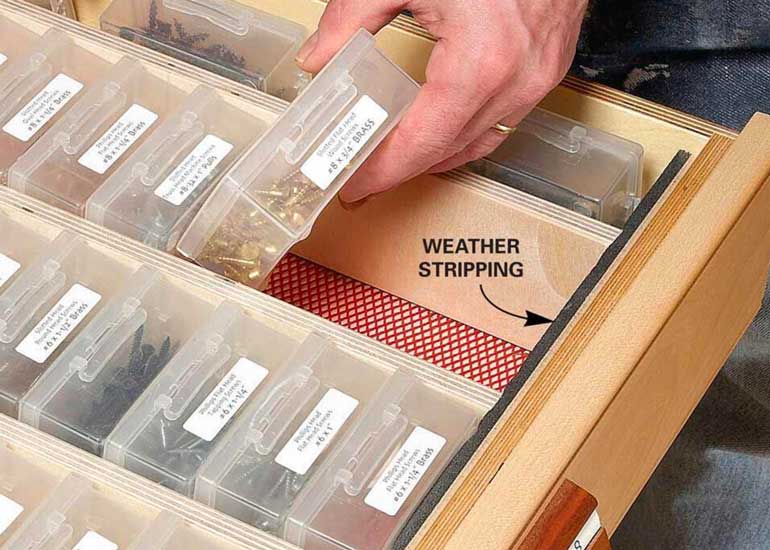
In this drawer, movable partitions are held in place by strips of foam weather stripping at the front and back. The 44-plus boxes rest on edge, labels up, for easy grabbing and stowing. The labels are typed on a computer and printed on sticky label sheets. Think of never having to wonder where to find a 2.5cm drywall screw or a 1cm washer! Shop for boxes at craft, tackle, office or dollar stores or online.
Saw blade roost
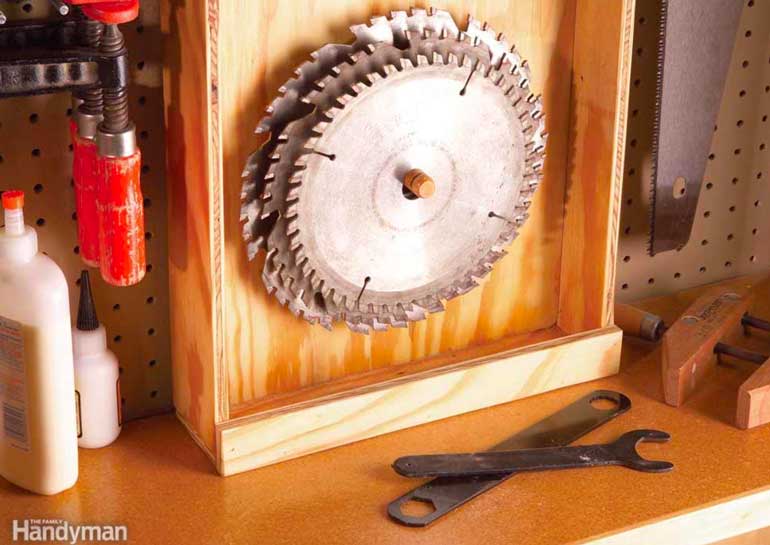
Here’s a double-duty holder for storing and cleaning table saw and circular saw blades. It features a slotted dowel to keep stored blades spaced apart so the teeth stay sharp. Using a handsaw, cut notches spaced at 1cm intervals halfway through a 1.5cm dowel. Glue the dowel in a hole drilled in a 40cm x 30cm piece of 2cm plywood. Frame the sides and lower edge of the plywood with 5cm strips of plywood and add a lower facing piece to create a basin at the bottom.
When a blade needs cleaning, remove the other blades and line the rack with tinfoil. Then mount the gunked-up blade on the dowel, spray one side with oven cleaner, and flip it over and spray the other side. Any drips go in the basin, and the sides minimise overspray. Let the cleaner work for an hour or so, then use a moistened kitchen scrub pad to scour the dissolved gunk and burned sawdust off the blade. Then throw away the foil and store your blades.


